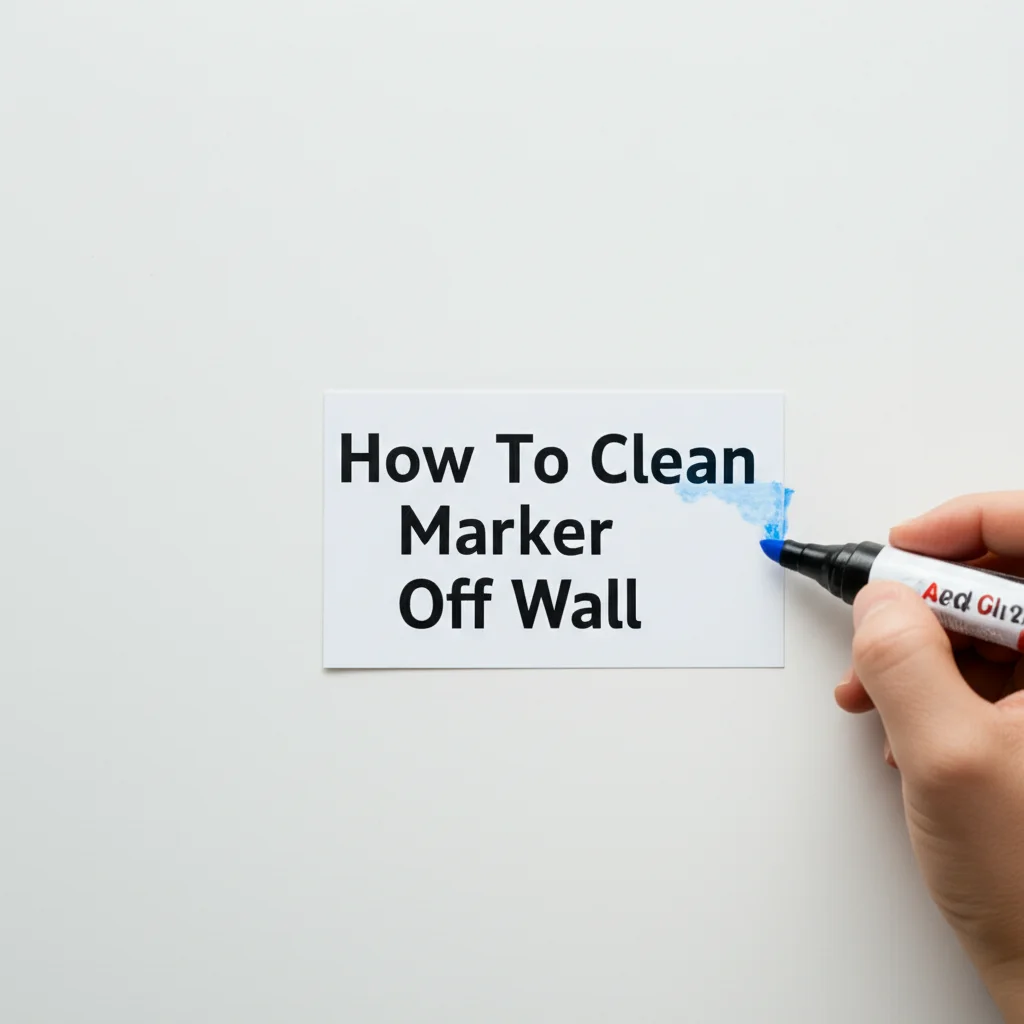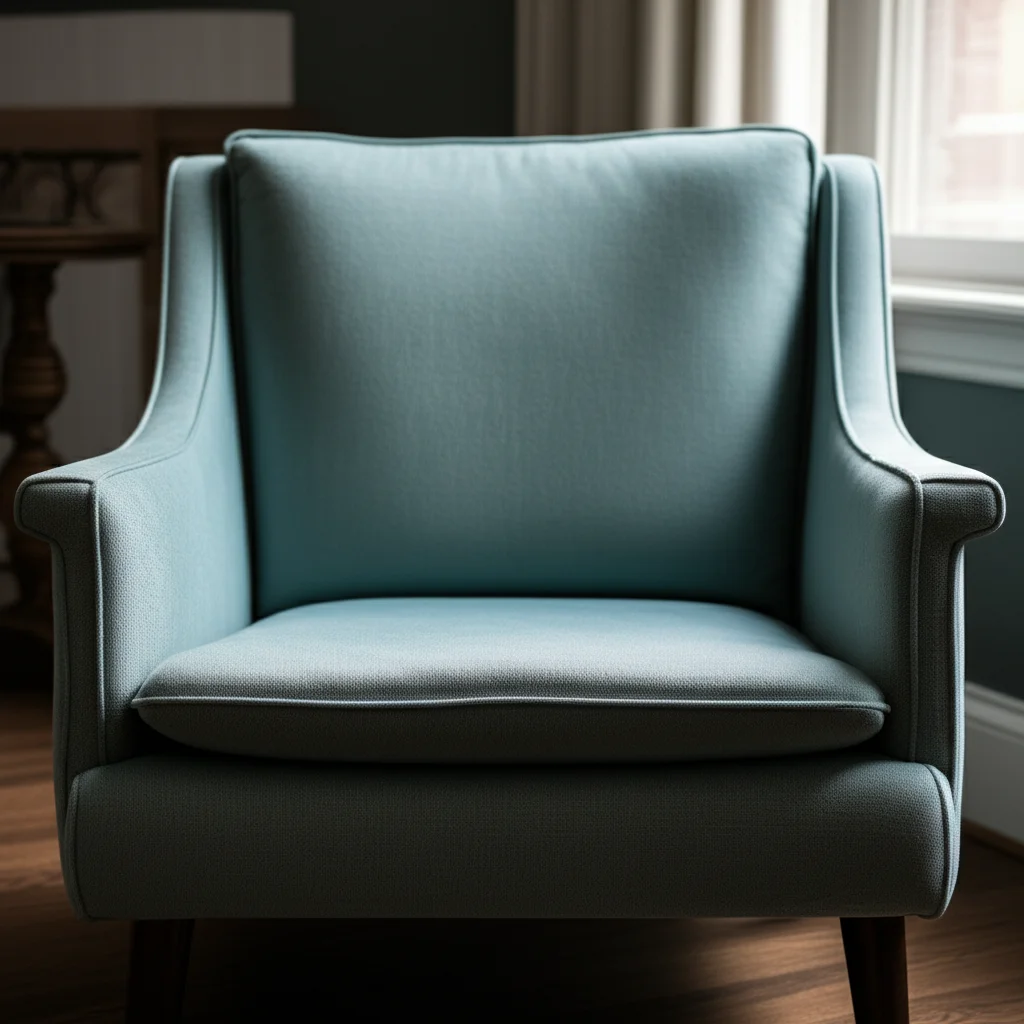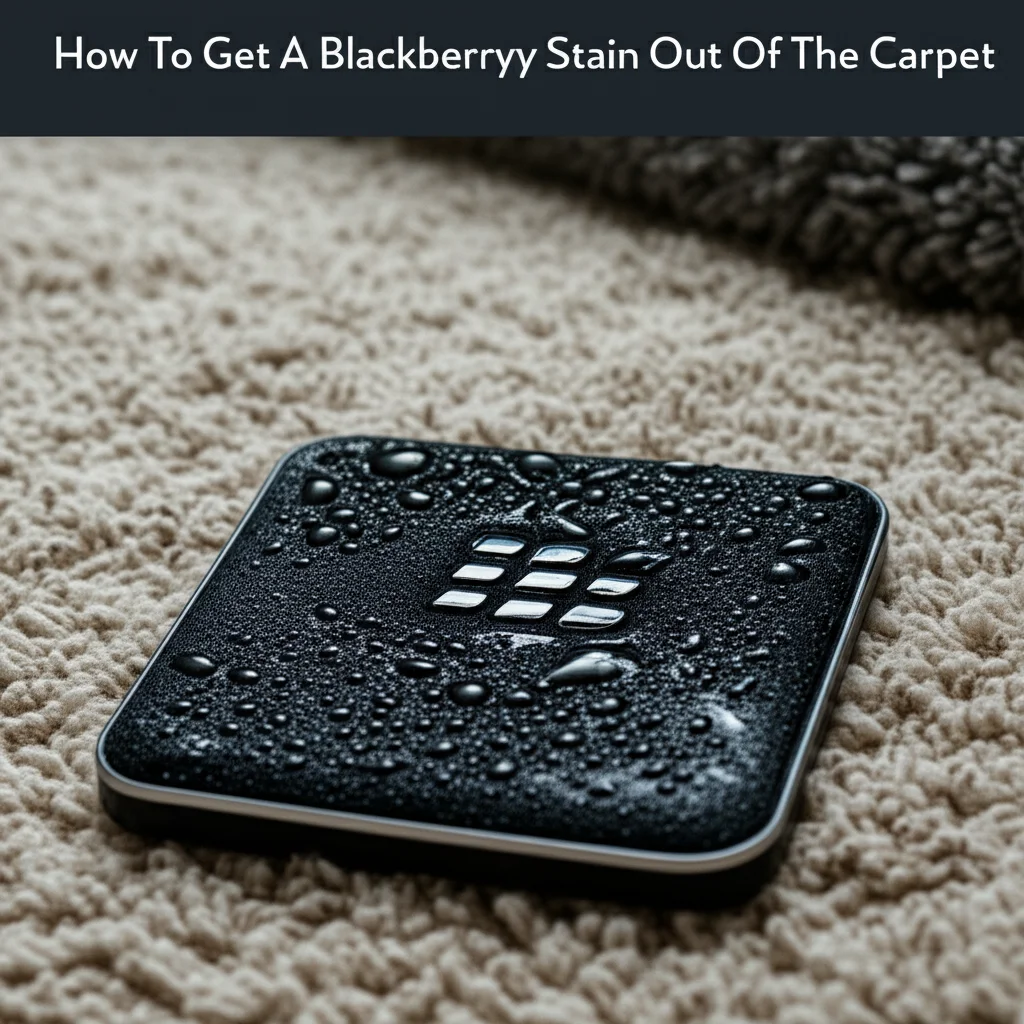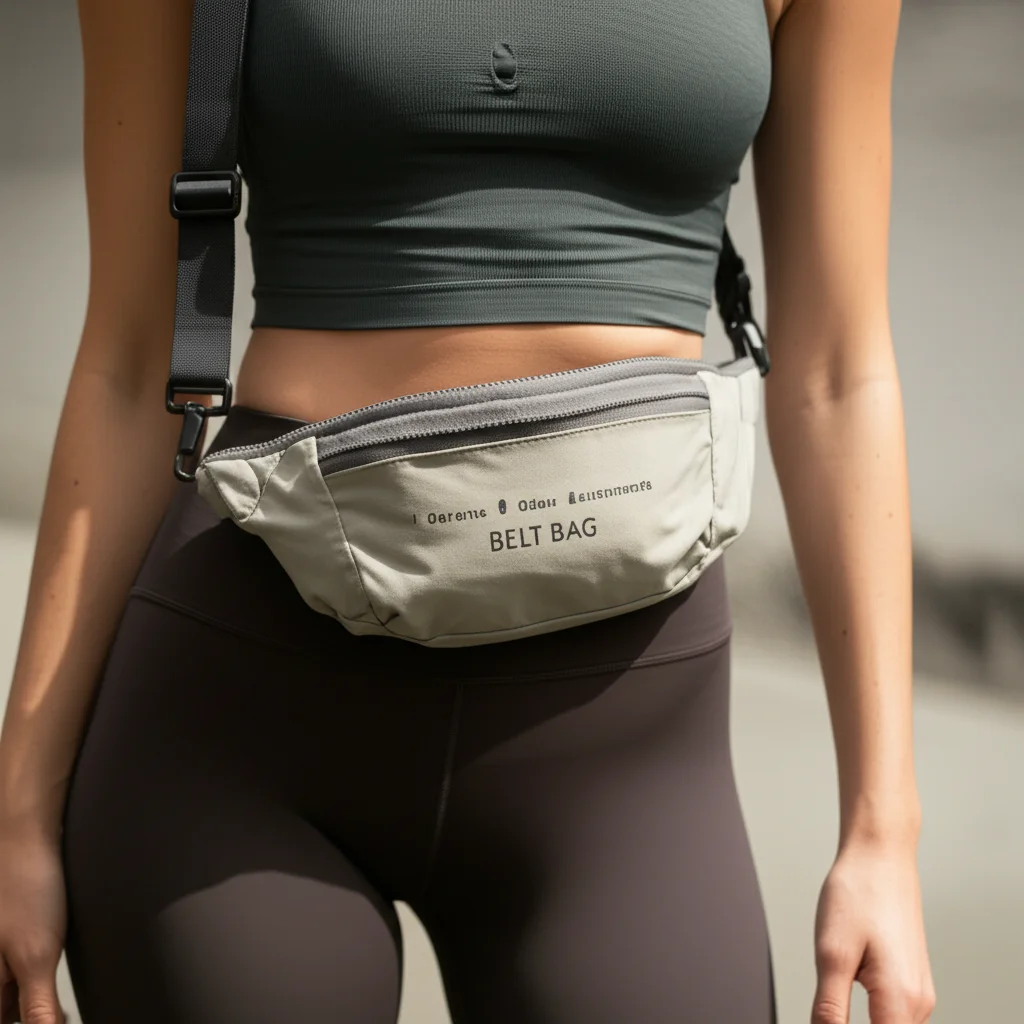· Todd Martin · Home Care · 21 min read
How To Clean Marker Off Wall

How To Clean Marker Off Walls: A Comprehensive Guide
Finding marker stains on your walls can feel like a cleaning crisis. Whether it is a colorful masterpiece from a budding artist or an accidental smudge, these marks appear unwelcome. I know the frustration of seeing permanent marker where it should not be. You might think it is a permanent problem, but often, it is not. With the right approach, you can effectively clean marker off walls without damaging the paint or surface.
This guide provides practical solutions for different marker types and wall finishes. We will explore various cleaning agents and step-by-step methods. You will learn how to identify your wall type and choose the safest cleaning method. We will also discuss preventing future marker mishaps. This article helps you restore your walls to their original, pristine condition.
Takeaway
- Identify the marker type and wall surface before cleaning.
- Always test cleaning solutions in an inconspicuous area first.
- Use gentle blotting motions; avoid harsh scrubbing.
- Start with the mildest cleaning agent and progress if needed.
- Consider natural alternatives like rubbing alcohol, baking soda, or vinegar.
To clean marker off a wall, start by identifying the marker type and testing your chosen cleaner on a hidden spot. Gently blot the stain with a cloth dampened with a suitable cleaning agent like rubbing alcohol, toothpaste, or a Mr. Clean Magic Eraser. Rinse the area with clean water and dry it to prevent damage.
Understanding Marker Types and Wall Surfaces
Before you attack that marker stain, you must understand what you are dealing with. Different markers have different chemical compositions. Permanent markers are often alcohol-based. Dry-erase markers are also alcohol-based, but they are designed to wipe away easily. Water-based markers are the easiest to clean. Knowing the marker type helps you pick the right cleaner.
Your wall surface also matters greatly. Painted walls are common, but they come in different finishes. Flat or matte paints are more porous and absorb stains easily. Satin, eggshell, and semi-gloss paints are more durable and easier to clean. They have a smoother, less absorbent surface. Wallpaper presents its own challenges. It can be delicate and absorb liquids quickly. Textured walls, like stucco or heavily painted surfaces, hold onto stains in their crevices. Understanding these factors prevents damage and improves cleaning success.
Identifying Your Wall Finish
- Flat/Matte: No sheen, absorbs light, difficult to clean without leaving marks.
- Eggshell/Satin: Slight sheen, more durable than flat, easier to clean.
- Semi-Gloss/Gloss: Noticeable shine, very durable, easiest to clean.
- Wallpaper: Check if it is washable or non-washable.
- Textured Walls: These have uneven surfaces, requiring careful cleaning.
Always test your cleaning solution on an inconspicuous area first. This step is vital. A hidden spot, like behind a door or a piece of furniture, will show you if the cleaner damages the paint or wallpaper. You do not want to create a bigger problem while trying to fix a small one. My past experience taught me this lesson the hard way. A little test saves a lot of headaches.
Essential Tools and Cleaning Agents
Having the right tools and cleaning agents makes all the difference when you clean marker off wall surfaces. You do not need a vast collection of harsh chemicals. Often, common household items work best. Start with the simplest options. Then, you can move to stronger cleaners if needed. This prevents unnecessary damage to your walls.
For tools, you will need several clean, white cloths or microfiber towels. White cloths prevent color transfer to your walls. A soft sponge can also be helpful. Always use gentle materials. Avoid abrasive scrubbers that can scratch paint or wallpaper. You might also need a spray bottle for some solutions. A small bowl for mixing solutions is also useful.
Common Household Cleaning Agents
Many effective cleaning agents for marker stains are already in your home. These include:
- Rubbing Alcohol (Isopropyl Alcohol): This is highly effective on permanent and dry-erase markers. It helps dissolve the ink.
- Hair Spray: Some hairsprays contain alcohol, which can work similar to rubbing alcohol.
- White Toothpaste (not gel): The mild abrasive in toothpaste can gently lift stains.
- Baking Soda Paste: Mix baking soda with a little water to form a paste. This creates a gentle abrasive. You can also combine it with vinegar for added cleaning power. For more tips on using this combination, see our guide on how to clean with vinegar and baking soda.
- White Vinegar: A diluted solution of white vinegar is excellent for many stains. It is especially useful for water-based markers. Learn more about how to clean walls with vinegar.
- Mr. Clean Magic Eraser: These sponges use micro-abrasive technology. They work well but can remove paint if used too aggressively. Use them with caution.
- Pencil Eraser: A regular pencil eraser can sometimes lift fresh, light marks.
- Dry Erase Marker: Believe it or not, drawing over a permanent marker stain with a dry-erase marker can sometimes reactivate and lift the ink. This method is surprisingly effective on smooth, non-porous surfaces.
- Hand Sanitizer: Most hand sanitizers are alcohol-based, making them a good substitute for rubbing alcohol.
Always start with the least aggressive method. You want to remove the stain without removing the paint. Apply the cleaner to your cloth, not directly to the wall. This helps control the amount of liquid.
Removing Permanent Marker from Painted Walls
Permanent marker on a painted wall can feel like a disaster. However, with the right approach, you can often remove these stubborn stains. The key is to act quickly and use the appropriate cleaning agent. Remember the testing rule before you begin. A small, hidden area test is crucial for protecting your wall’s finish.
For painted walls, especially those with satin or semi-gloss finishes, rubbing alcohol is usually the most effective first choice. It dissolves the ink without much scrubbing. You do not want to spread the stain or damage the paint. Blotting is always better than rubbing.
Step-by-Step Method for Permanent Marker
- Gather Supplies: You will need rubbing alcohol (isopropyl alcohol), several clean white cloths, and plain water.
- Test First: Apply a small amount of rubbing alcohol to a hidden spot on the wall. Blot it gently. Wait a few minutes to see if there is any discoloration or paint removal. If the paint comes off, do not proceed with alcohol.
- Apply Alcohol to Cloth: Pour a small amount of rubbing alcohol onto a clean white cloth. Do not pour it directly onto the wall.
- Blot the Stain: Gently blot the marker stain with the alcohol-dampened cloth. Work from the outside of the stain inwards. This prevents the stain from spreading. Change to a clean section of the cloth as it picks up ink.
- Repeat as Needed: Continue blotting until the stain fades or disappears. It might take several applications.
- Rinse and Dry: Once the stain is gone, lightly dampen a clean cloth with plain water. Gently wipe the area to remove any alcohol residue. Dry the spot with a dry cloth. This prevents streaks or water damage.
If rubbing alcohol does not work, you can try white toothpaste (not gel). Apply a small amount to the stain. Gently rub it in with a soft cloth or toothbrush. Wipe clean with a damp cloth. This method relies on mild abrasives. It is generally safer for paint than stronger solvents. For more information on removing tough stains from wood, which might be applicable to trim, you can check our article on how to clean stains on wood.
Tackling Dry Erase Marker Stains
Dry erase markers are designed to be easily erasable from smooth surfaces. However, sometimes they leave ghosting or persistent marks on walls. This often happens if the wall is porous or if the marker has been left for a long time. The good news is these stains are generally easier to remove than permanent marker. Your first instinct should be to use another dry erase marker or a regular eraser.
These markers are a common item in many homes or offices. Their ink is alcohol-based. This means the same principles for permanent markers often apply. Always remember to test your cleaning method first. This prevents accidental damage to your wall surface. For general wall cleaning tips, our guide on how to clean walls with a mop might offer some useful general techniques.
Methods for Dry Erase Marker Removal
- Use a Dry Erase Marker: This is a simple trick. Draw over the dry erase marker stain with a new dry erase marker. The fresh ink helps to re-liquefy the old ink. Quickly wipe both inks away with a soft cloth or a whiteboard eraser. This often works surprisingly well.
- Rubbing Alcohol: If the dry erase marker trick does not fully work, turn to rubbing alcohol. Dampen a clean cloth with rubbing alcohol. Gently blot the stained area. The alcohol helps dissolve the ink. Continue blotting until the stain disappears. Rinse the area with a water-dampened cloth and dry it.
- Pencil Eraser: For very light or fresh dry erase marks, a clean pencil eraser can sometimes lift the stain. Gently rub the eraser over the mark. This works best on smooth, non-porous painted surfaces.
- Mr. Clean Magic Eraser: This product is very effective for dry erase marker stains. Lightly dampen the Magic Eraser. Gently rub the stain. Be careful not to scrub too hard. Magic Erasers are abrasive and can remove paint if used vigorously. Test in a hidden area first.
- Hand Sanitizer: Similar to rubbing alcohol, hand sanitizer can be effective. Apply a small amount to a clean cloth. Gently blot the stain until it lifts. Finish by wiping the area with a damp cloth and then drying.
If you have stubborn ghosting, a very diluted solution of white vinegar can also help. Mix one part white vinegar with two parts water. Apply with a cloth and blot. This is a gentle approach. When dealing with similar marker issues on other surfaces, like boards, you might find our article on how to clean chalk marker off board helpful for comparative insights.
Strategies for Cleaning Whiteboards and Non-Porous Surfaces
Whiteboards are designed for dry-erase markers. However, they can still accumulate ghosting or permanent marker stains. Non-porous surfaces like glass, metal, or glossy plastic also present unique challenges. The key to cleaning these surfaces is using the right solvent without causing damage. These surfaces are generally more forgiving than painted walls.
For whiteboards, consistent cleaning prevents ink buildup. Always use proper whiteboard cleaners or dry-erase marker solution. When accidents happen, and permanent marker appears, there are specific methods to address it. These techniques rely on dissolving the ink. This is different from scrubbing.
Effective Cleaning Methods for Whiteboards
- Dry Erase Marker Method: This is the go-to for removing permanent marker from a whiteboard. Draw over the permanent marker lines completely with a dry erase marker. The solvent in the dry erase ink reactivates the permanent ink. Quickly wipe away both inks with a soft cloth or whiteboard eraser. Repeat if necessary.
- Rubbing Alcohol: If the dry erase marker method fails, rubbing alcohol is your next best bet. Apply rubbing alcohol to a soft cloth. Wipe the stained area firmly. The alcohol will dissolve the ink. Clean the entire whiteboard with a whiteboard cleaner afterward to remove residue.
- Hand Sanitizer: Just like rubbing alcohol, hand sanitizer contains alcohol. Apply a small amount to a paper towel or cloth. Rub the permanent marker stain until it lifts. Wipe clean with a damp cloth.
- Mr. Clean Magic Eraser: For stubborn ghosting or faint permanent marks, a Mr. Clean Magic Eraser works well. Dampen the eraser. Gently rub the affected area. Be careful not to press too hard, as it can wear down the whiteboard’s surface over time.
- Windex or Glass Cleaner: For general cleaning of whiteboards, especially after using a strong cleaner, a glass cleaner like Windex can effectively remove residues and restore shine. For more tips on glass cleaning, check out our guide on how to clean glass with vinegar.
Cleaning Non-Porous Surfaces (Glass, Metal, Glossy Plastic)
For other non-porous surfaces with marker stains, similar solutions apply:
- Rubbing Alcohol: This is the most versatile option for permanent marker on glass, metal, or glossy plastic. Apply with a soft cloth and wipe.
- Nail Polish Remover (Acetone): Use acetone with extreme caution. It is highly effective on permanent marker but can damage plastics and painted metals. Test a tiny, hidden spot first. If safe, apply a small amount to a cotton ball and blot the stain.
- Dry Erase Marker Method: This can also work on very smooth, non-porous surfaces like a refrigerator door or laminated surfaces if they are not too textured.
- Dish Soap and Warm Water: For water-based markers, a simple solution of dish soap and warm water is usually sufficient. Wipe with a damp cloth.
Always ensure good ventilation when using stronger solvents. Follow up with a rinse of clean water and a dry wipe to remove any residue.
Special Considerations for Wallpaper and Textured Walls
Cleaning marker off wallpaper and textured walls requires extra care. These surfaces are more delicate and absorbent than smooth, painted walls. Incorrect cleaning methods can cause irreparable damage, like tearing wallpaper or removing paint from textured finishes. Always proceed with caution.
Wallpaper can be particularly tricky. Some wallpapers are washable, meaning they can withstand a gentle wipe. Others are non-washable and will absorb liquids, leading to stains or damage. Knowing your wallpaper type is the first step. Textured walls, whether painted or natural, have crevices where ink can settle. This makes complete removal more challenging.
Cleaning Wallpaper
- Identify Wallpaper Type:
- Washable Wallpaper: Test a very small, hidden area first with your chosen cleaner. Look for color change or tearing.
- Non-Washable Wallpaper: These are very delicate. Avoid liquid cleaners. A dry method or professional help is often best.
- For Washable Wallpaper (Water-based marker):
- Pencil Eraser: For fresh, light marks, a clean white pencil eraser might gently lift the ink. Rub very lightly.
- Damp Cloth with Mild Soap: Mix a tiny drop of dish soap with water. Dampen a clean cloth lightly. Blot the stain carefully. Do not rub. Change to a clean section of the cloth often. Immediately blot dry with another clean, dry cloth.
- For Washable Wallpaper (Permanent marker - extreme caution):
- Rubbing Alcohol (Highly diluted): This is a risky option. Dilute rubbing alcohol heavily with water (e.g., 1 part alcohol to 5 parts water). Test meticulously. Apply to a cotton swab, not a cloth. Dab only the ink. Blot dry immediately. Stop if any damage occurs.
- White Bread: A surprisingly gentle method. Roll a piece of white bread into a ball. Gently rub the marker stain. The bread’s softness can sometimes lift the ink without damaging delicate surfaces.
- Mr. Clean Magic Eraser (Extreme caution): Use sparingly and very gently. Lightly dampen the corner. Dab the stain, do not rub. It can remove wallpaper print.
Cleaning Textured Walls
Textured walls, like stucco, popcorn ceilings, or heavily painted surfaces, hold ink within their bumps and valleys. This makes direct wiping less effective.
- Test Thoroughly: Test any method on a hidden part of the wall. The texture might make it more susceptible to showing damage.
- Baking Soda Paste: Mix baking soda with a small amount of water to form a thick paste. Apply the paste to the stain. Gently dab it into the texture with a soft brush (like an old toothbrush) or a cotton swab. Let it sit for a few minutes. Gently wipe away with a damp cloth, following the texture.
- Rubbing Alcohol with Cotton Swab: For permanent marker, apply rubbing alcohol to a cotton swab. Carefully dab the marker stain in the crevices. Use a fresh swab frequently to avoid spreading the ink. Do not scrub hard.
- Mr. Clean Magic Eraser (with care): Dampen a Magic Eraser. Gently press and dab it into the textured area. The micro-abrasives can get into the texture. However, it can also abrade the texture itself or remove paint. Use very light pressure.
- Cleaning Walls in General: For general cleaning of textured walls, or if the stain is dirt-based, our article on how to clean dirt off walls might offer additional broad cleaning strategies.
It is crucial to be patient and gentle with these surfaces. Sometimes, complete removal is not possible without damaging the wall. In those cases, considering a small touch-up paint job might be the best solution. If you are dealing with other types of stains on textured walls, like crayon, our guide on how to clean crayon off wall offers parallel advice for delicate surfaces.
Natural Cleaning Solutions for Marker Stains
Many people prefer to use natural cleaning solutions in their homes. These options are often safer for families and the environment. They can be surprisingly effective for removing marker stains from walls. You might already have these items in your pantry. These solutions rely on gentle abrasives, acids, or solvents found in common household products.
Using natural cleaners reduces exposure to harsh chemicals. This is especially important in homes with children or pets. They also often provide a fresh, clean scent without artificial fragrances. Remember that even natural solutions need to be tested on an inconspicuous area first.
Popular Natural Options
- White Vinegar: White vinegar is a fantastic all-around cleaner. Its mild acidity helps break down many types of stains.
- How to use: Mix equal parts white vinegar and water in a spray bottle. Spray onto a clean cloth. Gently blot the marker stain. Rinse the area with a water-dampened cloth. Dry thoroughly. This works well for water-based markers and some dry-erase marks. It’s also great for general wall cleaning, as detailed in our guide on how to clean walls with vinegar.
- Baking Soda Paste: Baking soda is a mild abrasive that can gently scrub away stains.
- How to use: Make a paste by mixing a few tablespoons of baking soda with just enough water to form a thick consistency. Apply the paste directly to the marker stain. Let it sit for 5-10 minutes. Gently rub with a soft, damp cloth in circular motions. Wipe away the paste with a clean, damp cloth. Rinse and dry. This is good for permanent marker on painted walls. For broader cleaning applications, explore how to clean with vinegar and baking soda.
- Toothpaste (White, Non-Gel): The mild abrasives in white toothpaste can lift stains effectively.
- How to use: Apply a small dab of white, non-gel toothpaste directly onto the marker stain. Use a soft cloth or an old toothbrush to gently rub the toothpaste into the stain. Work in small circular motions. Wipe away the toothpaste and the lifted stain with a damp cloth. Rinse the area with clean water and dry.
- Lemon Juice: Lemon juice contains citric acid, which can act as a natural bleaching agent and stain remover.
- How to use: Squeeze fresh lemon juice onto a clean cloth. Blot the marker stain. Let it sit for a few minutes. Wipe clean with a damp cloth. This is best for lighter marks and white or light-colored walls, as it may slightly lighten darker paint.
- Cream of Tartar: This is another mild acid that can be effective, especially when combined with lemon juice or vinegar.
- How to use: Mix equal parts cream of tartar and lemon juice (or vinegar) to form a paste. Apply to the stain. Let it sit for 10-15 minutes. Gently wipe away with a damp cloth. Rinse and dry.
Always remember the importance of dabbing, not scrubbing, with any of these solutions. Excessive rubbing can spread the stain or damage the wall surface. Patience and persistence are key when using natural methods.
Preventative Measures and Wall Protection
Preventing marker stains on walls is easier than cleaning them. Implementing a few simple strategies can save you a lot of time and effort. Most marker incidents happen with children. Establishing clear rules about where markers can be used is a great start. Designating specific creative zones helps a lot.
Protecting your walls proactively can also reduce the impact of accidents. This involves choosing the right paint finishes and using protective coverings. Thinking ahead can make all the difference. I learned to keep art supplies in designated areas, and it reduced wall art considerably.
Smart Strategies for Prevention
- Designate Creative Zones:
- Art Easels: Provide a dedicated easel or art table for drawing activities. This clearly defines the space for creative expression.
- Large Paper: Roll out large sheets of paper on the floor or tape them to a designated wall. This gives children a sanctioned canvas.
- Whiteboards: Install a large whiteboard in a play area or child’s room. This offers a reusable surface for drawing.
- Supervision and Education:
- Supervise Art Time: Keep an eye on young children during art sessions. This allows you to intervene before a stray mark becomes a problem.
- Teach “No Wall” Rules: Clearly explain that walls are not for drawing. Consistency is important.
- Use Washable Markers: Opt for washable markers, especially for younger children. These are much easier to clean if they do get on walls.
- Wall Protection:
- Choose Washable Paint: When painting, select satin, eggshell, or semi-gloss finishes. These are more durable and easier to wipe clean than flat or matte paints.
- Protective Coatings: Consider clear, washable coatings for high-traffic areas or playrooms. Some clear coats are designed to be wiped down easily.
- Furniture Placement: Place furniture like bookshelves or sofas against walls in areas prone to marker use. This creates a barrier.
- Child-Proofing: Store markers and other art supplies in child-proof containers or out of reach when not in use.
- Quick Action:
- Immediate Cleaning: If a marker stain does occur, clean it immediately. Fresh stains are always easier to remove than old, set-in ones. This minimizes the chance of the ink absorbing deeply.
- Cleaning Supplies Handy: Keep basic cleaning supplies, like rubbing alcohol or a Mr. Clean Magic Eraser, easily accessible. This encourages quick action.
By combining preventative measures with smart cleaning practices, you can keep your walls looking pristine. It is about creating a safe and creative environment. You also protect your home surfaces. For other wall-related cleaning issues, such as mold, our article on how to clean mold off walls provides additional guidance on maintaining wall integrity.
FAQs About Cleaning Marker Off Walls
Q1: What is the best way to clean permanent marker off a painted wall?
The best way to clean permanent marker off a painted wall is often by using rubbing alcohol. Apply it to a clean cloth and gently blot the stain. Always test the alcohol on an inconspicuous area of the wall first to ensure it does not remove paint. Repeat the blotting process until the stain fades, then wipe the area with a damp cloth and dry.
Q2: Can I use a Magic Eraser on my painted walls to remove marker?
Yes, you can use a Mr. Clean Magic Eraser on painted walls to remove marker stains. However, use it with extreme caution. Magic Erasers are micro-abrasive. They can remove paint or dull the finish if you scrub too hard or use them too frequently. Always dampen the eraser and use gentle, light pressure. Test it on a hidden spot first.
Q3: What should I do if the marker stain is on wallpaper?
Cleaning marker off wallpaper depends on the wallpaper type. If it is washable, gently blot the stain with a lightly dampened cloth and mild soap. For non-washable wallpaper, avoid liquids entirely. Try a dry pencil eraser or a gentle white bread ball. Always test any method on a hidden area first, as wallpaper is very delicate and can tear or discolor easily.
Q4: Are there any natural remedies for removing marker from walls?
Yes, several natural remedies can effectively remove marker from walls. White vinegar mixed with water, a paste made from baking soda and water, or non-gel white toothpaste are all good options. Lemon juice can also work for lighter marks. Always apply these to a cloth and blot the stain gently. Rinse the area with water afterward.
Q5: How can I prevent children from drawing on walls with markers?
Preventing children from drawing on walls involves designated creative zones and clear rules. Provide art easels or large sheets of paper taped to a specific, approved wall area. Supervise art activities closely. Store markers and art supplies out of reach when not in use. Choosing washable markers and paint finishes that are easy to clean also helps prevent future incidents.
Conclusion
Finding marker on your walls does not have to be a permanent problem. With the right tools and techniques, you can effectively clean marker off wall surfaces. I know it feels daunting at first glance, but most stains can be tackled. Remember to identify the marker type and your wall’s finish before starting. Always test your chosen cleaning solution on an inconspicuous area first. This step is crucial for protecting your paint or wallpaper.
Start with the gentlest method, like a pencil eraser or a damp cloth. Then, move to stronger options like rubbing alcohol or baking soda paste if needed. Blotting is key; avoid harsh scrubbing that can damage surfaces. By following these steps and using caution, your walls can return to their spotless state. Embrace these simple strategies. Your walls will thank you. Now you have the knowledge to confidently tackle those unexpected wall decorations.





